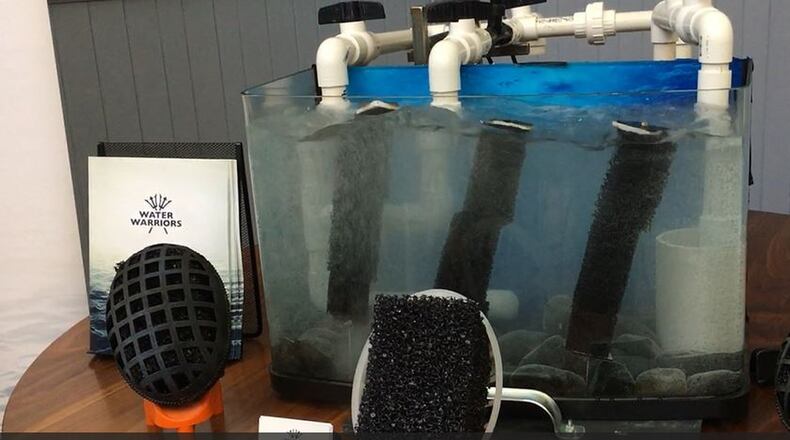“Unfortunately, many waste-water treatment plants, they’re just not equipped to remove that nitrogen and phosphorous,” said Steve Chamberland, the director of business development.
Water Warriors uses bacteria, microscopic bubbles and “homes for bacteria” to remove the two chemicals. Those bubbles, about the width of human hairs, can remain underwater about four hours, giving bacteria oxygen they need to more quickly do their work and cutting sewer utilities’ energy costs about in half.
“So really, we’re nothing more than real-estate moguls in the bacteria world,” Chamberland quipped during a recent presentation about its product in Cincinnati’s Over-the-Rhine neighborhood. Water Warriors were one of six companies that participated in this year’s Hamilton-based Pipeline H2O program, which trains water-technology companies from around the world during a five-month period that ended last month.
Dr. Rakesh Govind, Water Warriors’ chief technology officer, is a professor of chemical engineering at the University of Cincinnati.
Water Warriors CEO John Gradek said the company uses “foam media” that house bacteria, increasing the bacteria concentrations by 700 percent, allowing treatment plants to work with more waste, in less space and less time.
During a meeting with a Fortune 500 food and beverage company that now is a client, a factory manager told Water Warriors another company had quoted the cost of solving his nutrient-removal problem at $20 million in new infrastructure, Chamberland told his audience. Water Warriors’ quote was $3 million.
The competitors’ solution was to build a larger treatment plant with more processing tanks. Water Warriors’ solution, he said, can be installed within existing facilities to make them work better.
All their products can pay for themselves within a year, a surprisingly short span.
The Pipeline H2O program is based in the former Hamilton municipal building at 20 High St., in the city’s business-assistance program known as Hamilton Mill.
About the Author
